You’ve gotten some hints, but many people have asked what my wardrobe was like for my Fortnight in 1916.
I did a great deal of research in diaries and newspaper articles, and assembled what I thought resembled a fairly middle of the road wardrobe for a housewife to wear during a two week period in Wellington in August 1916. One thing my researched revealed is that, just like today, there was probably a fair amount of variation in wardrobes, even in the same social class. Some of us own dozens of bras, some of us own 2: the same was true in 1916.
Here, however, is my best guess at what a middle class Wellington housewife would have worn over a two week period in winter 1916 (eta: her total wardrobe would have been bigger, particularly in terms of accessories, one or two nice outfits, and seasonal items, but that didn’t come up in my fortnight):
Five combinations:
My research indicates very poor women only had one set of undergarments, and even some ‘middle class’ women did with as few as two, but might also have as many as 10. Wool long combinations were probably more common for winter wear, but combinations of this pattern were definitely known in NZ in this period. All were made from Wearing History’s Combination pattern.
Two longline corsets:
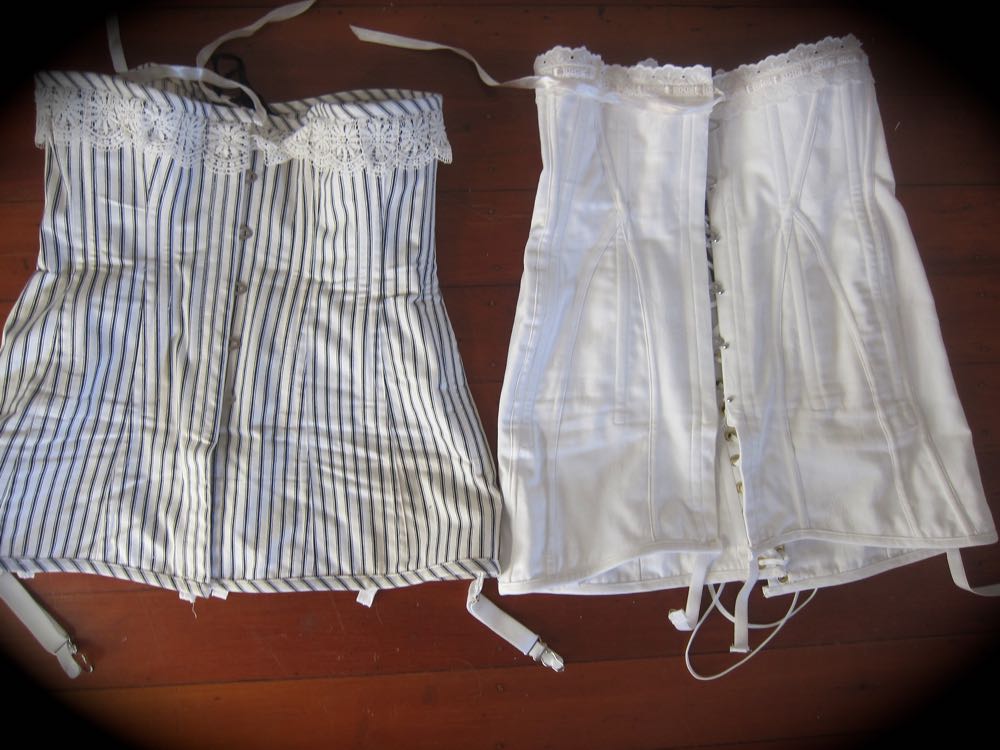 As you know, one was great, the other…not so much.
As you know, one was great, the other…not so much.
Eight pairs of stockings:
One for each day of the week, and one for wash day!
Four corset covers:
Two were made from my own pattern, two from Wearing History’s corset cover pattern.
Three petticoats:
All cotton, but a wool flannel petticoat might still have been common during the winter of 1916.
Four blouses:
Two based on Wearing History’s Edwardian Blouse, one is Wearing History’s Elsie blouse, and the fourth one is taken from a 1910s blouse I own, was sewn during the fortnight, on my 1893 Singer 27!
Three Skirts:
Plus, one pair of shoes, two hats, a cardigan, a cardigan jacket, two pairs of gloves, and a coat!
It makes a fine pile of garments:


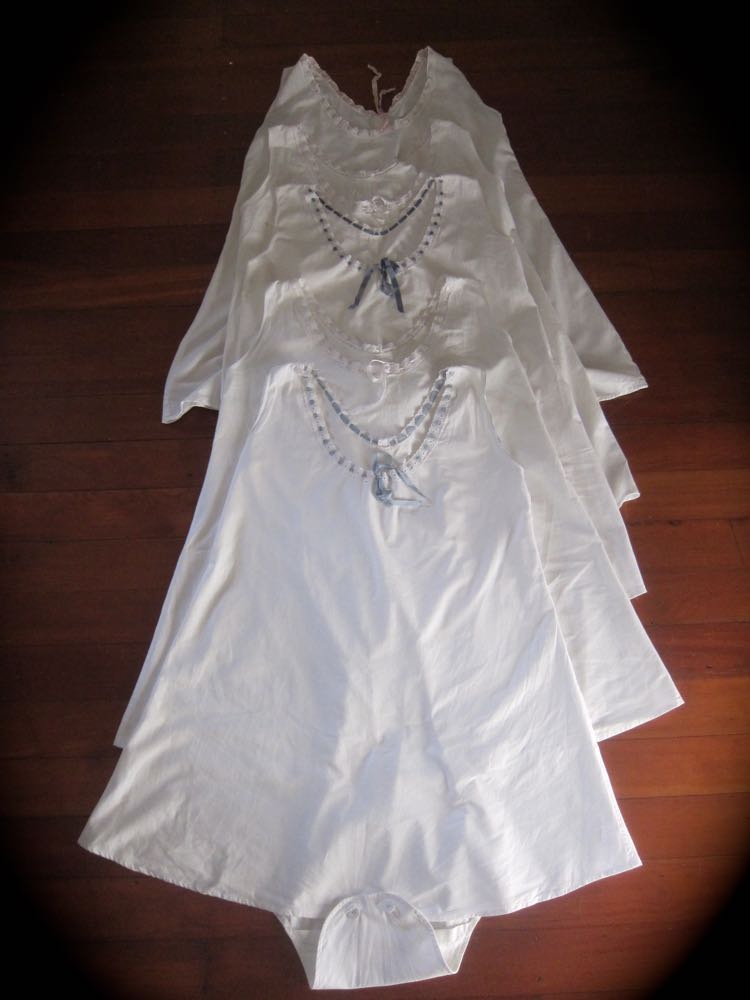



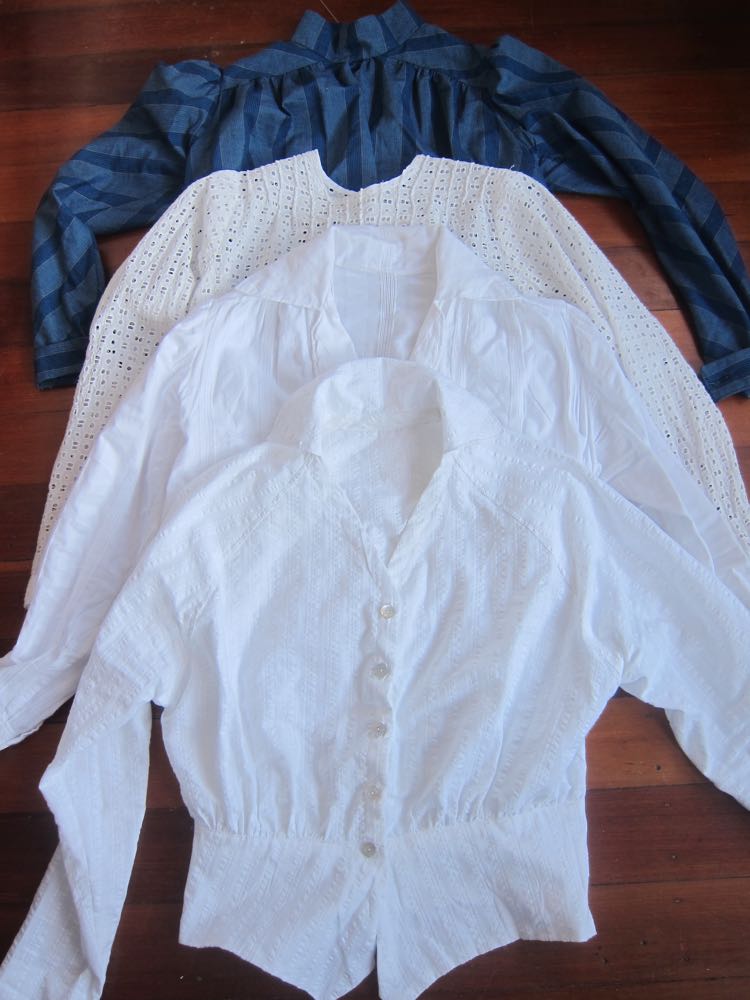
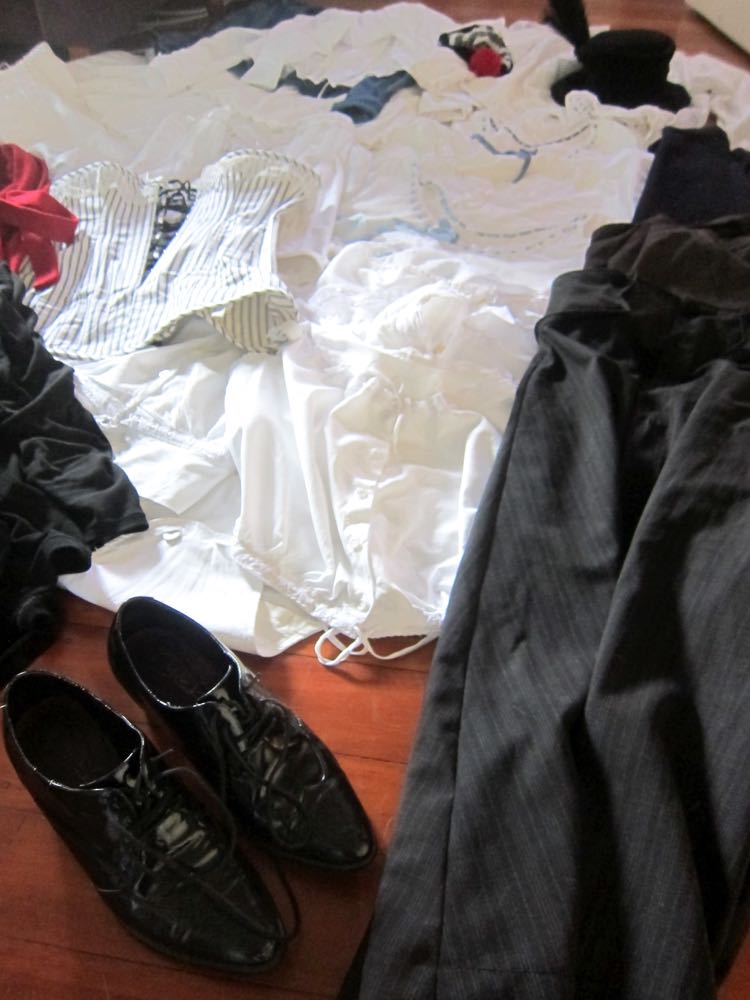
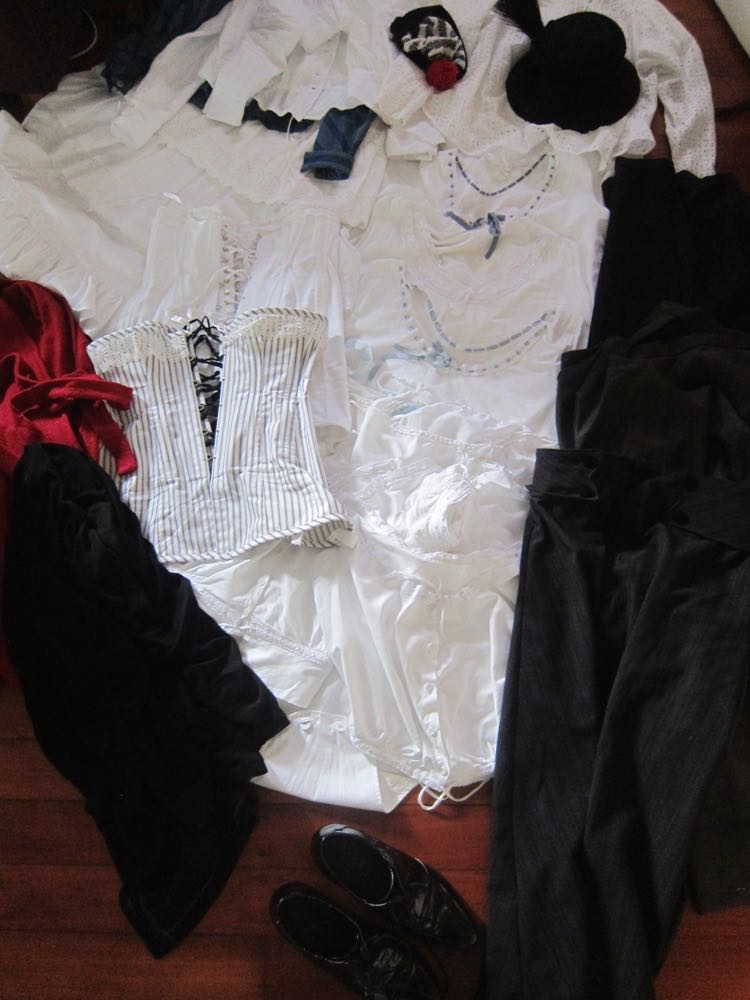
I’ve been absolutely fascinated by this!! One question – would only one pair of shoes have been realistic, given the rest of the wardrobe? I imagine that most women who could have afforded it would have had at least a second pair of shoes, to rotate and/or wear for special occasions – Barry Pain’s “Eliza”, although definitely lower-middle-class and not really well-off, had a second pair of shoes for going out in, but again, this was London in around 1910, so different country and date….
Oh, definitely I think women would have had other pairs of shoes for special occasions. It just happened that my two week period didn’t have a single occasion for which I would have been dressing up where it modern life, so I figured that was a realistic possibility for 1916 as well. Shoes were also a thing that really jumped in price during the war, so it may have been somewhere where women economised. And despite the 50+ pairs of shoes I own, it’s not uncommon for me to wear the same pair for two weeks at a time in winter, so it was definitely true to me!
I did have a pair of ‘nice’ shoes ready, but they never got pulled out.
sewcharacteristicallyyou.comYou certainly did your research. I would probably have gone in unprepared with the necessary number of garments for washing only once a week. You did a great job on the planning aspect of this project.
Sarah
http://www.sewcharacteristicallyyou.com/blog
When considered as the minimum amount of clothing required for a week, it’s a lot of clothes compared to 2016 (most of us today own far more than the minimum amount of clothes we actually need, so in fact we would have more clothes than this). Not only are there more items than people today would typically wear, but the individual items are often bulkier than today’s clothes.
The immediate thing that strikes me, is the extent to which the 1916 wardrobe has to be structured around the weekly wash cycle. You can’t just throw some things in the wash after work, so you really do have to have enough undergarments to see you through the week.
It is a ton of fabric, but when you think that this is at about half of your entire wardrobe for a year, that’s pretty small! The skirts were only worn 4-5 times each, but over a winter you really would wear them day in and day out.
One thing that I really noticed is that while we structure modern wardrobes around layering and outerwear, and that’s how we keep warm, 1916 wardrobes were really about the undergarments.
That`s what struck me about your photos- so much beautiful underwear! What materials were your skirts made of? I know that wool was popular but I would imagine that it would not be suitable for doing cooking and cleaning in. And you forgot to mention aprons- no self respecting housewife would move an inch in her kitchen without an apron. Love aprons especially those of this era.
I am so impressed with your social experiment. I know I have dreamed of doing something like this, but you actually did it! Wow! I am anxiously awaiting to hear/read about your experiences. Good for you 🙂
That’s an amazing haul!
I’ve really enjoyed reading about your fortnight’s “time travel”, but I’m afraid I’m going to ask what is probably a super-ignorant question: where does one find instructions for 1910s hair-styling?
Well done! The only period I might have a prayer of amassing a fortnight’s wardrobe is 9th c. Viking, but I couldn’t manage to simulate the living conditions.
However, you may be interested in reading about a group in Trondheim, Norway, who sought to spend a week in the Viking Age: http://thevikingway.no/?p=1579
Did you find that the undergarments helped keep the skirts and blouses reasonably fresh for multiple wearings between washes? I’ve been reading about medieval England linen undergarments and how researchers have found that they keep both body and outer clothing cleaner than one might think. The 1916 wardrobe looks to provide a pretty good amount of coverage!
Ditto everyone else’s comments above. I love every aspect of this!!
Well done, and lovely to see you use so many Wearing History patterns! She works so hard to put out great patterns, and I never have a problem with them!
Corinne, many of us have a modern perception of wool as a luxury fabric that requires delicate care. In fact, wool, along with linen, was the fabric of everyday clothing before cottons and synthetics became the norm. Wool does not fare well in a washing machine on a “normal” cycle–it will shrink and felt–but it is very easily hand washable. The only reason wool clothing carries dire label warnings for “dry clean only” is that people typically do not have any knowledge of how to care for wool these days.
Wool is really a wonderful, hard wearing fiber! It resists dirt, it can hold up to 30% of its own weight in moisture without feeling heavy or wet, it breathes well yet is insulating, and it is naturally flame resistant.